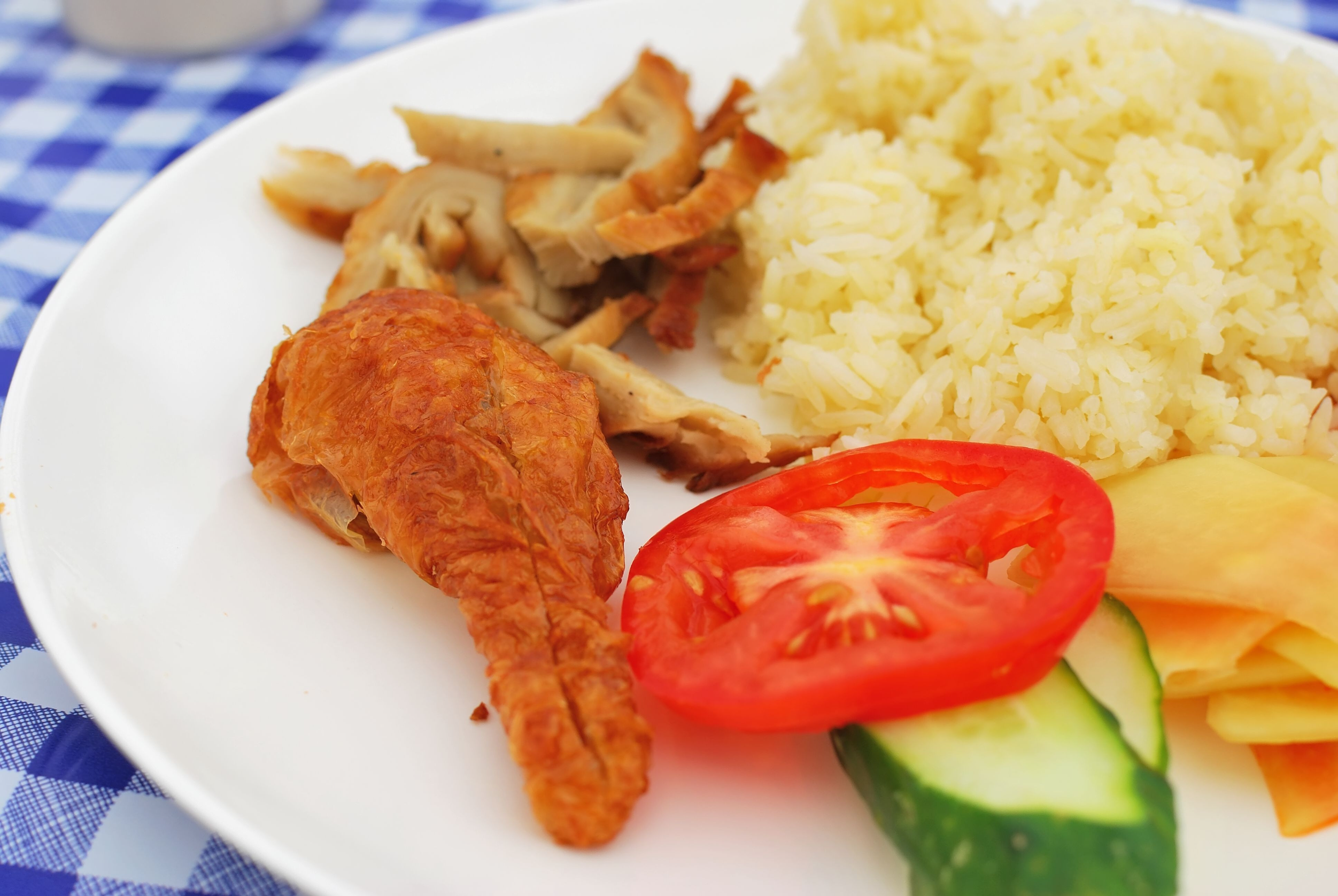Madagascar's Cuisine: A Food Lover's Paradise

Embarking on a culinary exploration in Madagascar introduces travellers to a world where every bite tells a story of cultural confluence and rich biodiversity. Madagascar's culinary landscape is a testament to its diverse cultural heritage, shaped by influences from its Austronesian roots to French colonial times and further enriched by interactions with East Asia, the Middle East, and the Bantu-speaking peoples of East Africa. These influences are woven into the country's food scene, from terraced rice paddies to the liberal use of spices like vanilla and pepper, not to mention the abundance of fruits, vegetables, and seafood afforded by its expansive coastline.
Delving into Traditional Malagasy Cuisine
Exploring traditional Malagasy cuisine unveils a world where each dish narrates Madagascar's rich cultural heritage and natural abundance. From savoury zebu beef to the fresh flavours of tilapia à la Malagasy, Madagascar offers culinary adventures that blend tradition with the island's diverse influences. Let's dive into the heart of Madagascar's food culture, where every bite reveals a story.
Zebu (Beef)
For those with a penchant for meat, Madagascar is a paradise. The zebu, a locally bred humped cow, is a common sight both in the landscape and on the menu. Renowned for its tenderness and flavour, zebu meat is a versatile ingredient, appearing in everything from grilled skewers and filets to slowly stewed traditional dishes.
Romazava
Regarded as the quintessential Malagasy dish, Romazava is a rich stew made with beef (or other meats) and a melody of tomato, garlic, ginger, and a mix of stewed greens. The slow braising process ensures the meat is tender enough to melt in your mouth.
Ravitoto
Despite its exotic name, Ravitoto is a dish of mashed cassava leaves. Often served vegetarian, it achieves a creamy texture when mixed with coconut milk and spices. Traditionally, it may also be stewed with pork, offering a harmonious blend of the cassava greens' slight bitterness and the meat's richness.
Tilapia à la Malagasy
This dish presents tilapia in a flavorful sauce comprising tomatoes, greens (such as watercress), onions, garlic, ginger, and other herbs. The result is a tender and delicious fish dish that captures the essence of Malagasy cuisine.
Laoka
Laoka refers to any side dish served with rice, often including vegetables but sometimes featuring meat or salted fish. The key is in the sauce or stew, which incorporates a traditional blend of Malagasy flavours like tomato, ginger, turmeric, garlic, onion, and occasionally vanilla.
Vegetarian Options Abound
While meat dishes are prevalent, Madagascar's fertile lands yield abundant vegetables, making vegetarian options readily available. Though meat may be a luxury item in many households, leading to predominantly vegetarian home cooking, finding plant-based dishes in restaurants can sometimes be a challenge due to the cultural expectation of meat consumption when dining out. Nevertheless, vegetarians can find solace in dishes like vegetarian Ravitoto, various vegetable-based Laoka, and other vegetarian-friendly dishes listed below.
Lasary
Every vegetarian should remember that Lasary refers to pickled or sautéed mixed vegetables, often served alongside rice. Lasary Voatabia, a popular version akin to tomato salsa with parsley, is a refreshing and tasty option for those seeking a vegetable fix.
Madagascar Beans
Although not explicitly named "Madagascar beans," beans are a staple in the local diet and can often be found on menus, simmered until soft and savoury. They're a nutritious and satisfying choice for vegetarians and meat-eaters alike.
Minsao (Misao)
A testament to Madagascar's culinary diversity, Minsao is a Chinese-Malagasy fusion dish featuring stir-fried ramen noodles with vegetables, which can also be adapted to include meat for those who prefer it.
The Staple of Malagasy Cuisine: Rice
Rice is not just a component of meals in Madagascar; it is the centrepiece. "To eat" in Malagasy is synonymous with consuming rice, highlighting its importance in the local diet. Rice is the foundation upon which meals are built, accompanied by meats, vegetables, and other sides.
Spicing up the Palette
Despite the rich array of spices available, traditional Malagasy dishes tend to avoid heavy use of heat. However, for those who crave a bit of spice, options like Sakay, a local hot sauce made from chilli, ginger, and garlic, and Achard, a pickled condiment with green mango or vegetables, offer a fiery addition to meals.
The French Influence
Madagascar's past as a French colony has left an indelible mark on its cuisine, evident in the widespread availability of baguettes and pastries, as well as the French culinary techniques and flavours that permeate many dishes, including zebu served with green pepper or mustard sauce, and classic French preparations of duck.
Coastal Seafood Delights
Proximity to the coast means a bounty of fresh seafood, from grilled fish to specialities like lobster in vanilla sauce. The freshness and method of preparation ensure an authentic and delicious culinary experience.
Snacks and Sweets
Madagascar offers a variety of street food and snacks, from savoury fritters to sweet banana beignets and the rich, distinctive flavours of local chocolate. These treats provide a glimpse into the everyday culinary life of the Malagasy people.
Beverages: From Coffee to Rum
The local drinks scene is varied, with Madagascar coffee and tea offering a refreshing complement to meals. The island's rum, often infused with vanilla or fruits, provides a potent taste of the local culture.
Vanilla Beans and Spices: The Aromatic Souvenirs
As the world's top producer of vanilla, Madagascar is the perfect place to source vanilla beans and spices, which can bring the distinctive flavours of Malagasy cuisine into kitchens worldwide.
Conclusion
In summary, Madagascar's culinary landscape is as diverse and vibrant as its ecosystem, offering an array of flavours and dishes that reflect the island's rich cultural heritage and natural bounty. From the staple rice dishes to the varied uses of zebu and the fresh seafood along the coast, Madagascar is a food lover's dream, promising an unforgettable gastronomic adventure.
FAQS
What makes Malagasy cuisine unique?
Malagasy cuisine is a vibrant blend of diverse cultural influences, including Austronesian, French colonial, East Asian, Middle Eastern, and East African. This amalgamation of flavours and Madagascar's rich biodiversity produce an unforgettable dining experience that celebrates the island's rich cultural heritage and natural abundance.
Can vegetarians find suitable options in Madagascar?
Yes, Madagascar's fertile lands produce abundant vegetables, making vegetarian options plentiful. Despite the prevalence of meat in the Malagasy diet, vegetarians can enjoy dishes like vegetarian Ravitoto, various vegetable-based Laoka, and Lasary, among others.
What is considered the national dish of Madagascar?
Romazava is often regarded as the national dish of Madagascar. It is a hearty stew made with beef (or other meats) and a mix of vegetables, including tomato, garlic, ginger, and greens, slow-cooked to tender perfection.
Are there any dishes for spice lovers in Madagascar?
While traditional Malagasy dishes are not typically spicy, those craving heat can try Sakay, a local hot sauce made from chilli, ginger, and garlic, or Achard, a pickled condiment made with green mango or vegetables, to add a fiery kick to their meals.
How does French colonial history influence Malagasy cuisine?
French colonial history has left a significant mark on Malagasy cuisine, evident in the widespread availability of baguettes and pastries and the incorporation of French culinary techniques and flavours into many dishes, such as zebu served with green pepper or mustard sauce and classic French duck preparations.
What seafood dishes are recommended along Madagascar's coast?
The coastal regions offer a bounty of fresh seafood options. Grilled fish, lobster with vanilla sauce, and seafood skewers are just a few of the specialities. The freshness and local preparation methods ensure an authentic and flavorful culinary experience.
What are some popular Malagasy snacks and sweets?
Madagascar's street food scene offers a variety of savoury fritters, sweet banana beignets, and the rich, distinctive flavours of local chocolate. These snacks provide a delicious glimpse into the everyday culinary life of the Malagasy people.
Is rice a significant part of Malagasy cuisine?
Yes, rice is the centrepiece of Malagasy cuisine. It's not just a component of meals; it's the foundation. The Malagasy phrase for eating a meal translates literally to "eating rice," underscoring its importance in the local diet.
Get Your Madagascar eVisa
Step1: Complete the online application form by providing your passport details.
Step2: Safely process your payment using your credit card through our secure online platform.
Step3: Monitor your email for payment verification and the electronic dispatch of your eVisa.
